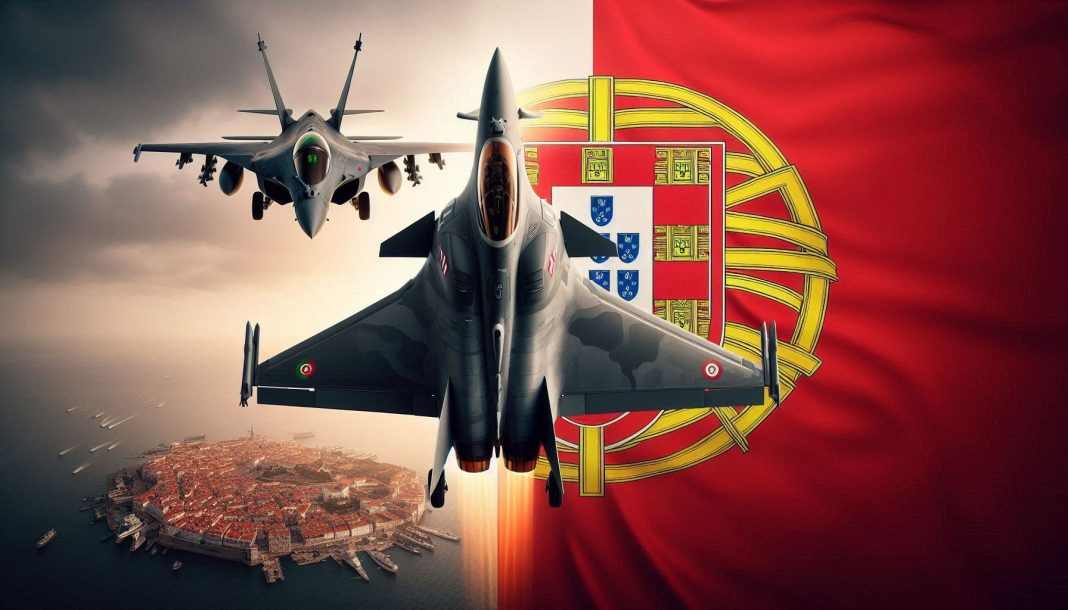Portugal made a recent announcement to replace America’s F-35 fighter jets with France’s Rafale, marking a bold and important change in Portugal’s defense plans. The F-35 is one of the most advanced fighter jets in the world, known for its stealth technology and powerful systems. However, it comes with a very high price tag. Portugal’s decision to choose the Rafale instead shows a focus on balancing military strength with cost-effectiveness.
A Major Defense Shift for Portugal
The Rafale is a multirole fighter jet that can perform many different types of missions. It is highly flexible and can easily adapt to different combat situations. In addition, it is designed to work well with European defense networks. Portugal’s choice reflects a desire to modernize its military while also cooperating more closely with other European nations.
One of the main reasons behind this shift is the cost of the F-35. The F-35’s advanced systems and technology make it expensive to purchase and maintain. Portugal’s military needs, however, require a more balanced approach that takes into account both capabilities and available budgets. The Rafale’s medium cost and wide range of mission capabilities make it a suitable option.
Indonesia stuns China with bold Rafale jet surge during Paris defense push
Furthermore, the Rafale’s compatibility with European military systems adds to its appeal. The jet’s ability to integrate with European forces makes joint operations easier. This decision shows Portugal’s preference to work alongside neighboring countries and strengthen European defense ties.
Economic and Industrial Benefits for Portugal
Portugal’s decision to go with the Rafale is not only about military strength but also about economic opportunities. By choosing a European aircraft, Portugal is encouraging cooperation within the European Union. This can lead to new technology sharing agreements and industrial partnerships that benefit the country’s economy.
The defense industry in Portugal could receive new investments, which may create jobs and promote research and development in aerospace technology. The Rafale’s adoption could also open doors for Portuguese companies to participate in maintenance, upgrades, and supply chains, helping the local workforce.
This decision might influence other countries in Europe to explore similar aircraft choices. As more nations focus on European-made equipment, the defense sector across the continent could experience growth. Experts believe this move strengthens Europe’s ability to work together while reducing reliance on outside suppliers.
The shift also aligns with Portugal’s strategy of ensuring that military equipment meets both its security requirements and financial constraints. By investing in a jet that is more cost-effective, Portugal is able to enhance its defense without stretching its budget.
🇨🇭 Swiss outrage erupts as Trump slaps record 39% tariffs, shaking F-35 jet deal
Comparing the F-35 and Rafale
To better understand Portugal’s decision, it is important to compare the F-35 and the Rafale. These two fighter jets are built with different priorities, which affects their cost, performance, and overall usability.
One major difference between them is the cost. The F-35 is expensive, whereas the Rafale is more affordable with medium-level expenses. In terms of stealth, the F-35 offers superior technology that helps it avoid enemy radar, while the Rafale provides moderate stealth capabilities. When it comes to mission flexibility, the F-35 is more specialized, focusing on specific roles, whereas the Rafale is highly versatile and can handle a variety of combat missions such as air-to-air combat, ground attacks, and maritime operations. Another key difference is European integration. The F-35 has limited compatibility with European defense networks, but the Rafale integrates seamlessly, making it easier for Portugal to coordinate with other European forces.
The F-35’s advanced stealth and sensor systems allow it to operate in challenging environments while staying undetected. However, these features result in higher maintenance and operational costs. The Rafale, although less advanced in stealth, is more adaptable and can quickly shift between different types of missions as required.
The Rafale’s ability to work smoothly with European systems is a significant advantage for Portugal. It helps streamline joint exercises and deployments with other NATO members, reducing operational complications.
By selecting the Rafale, Portugal is focusing on a balance between mission flexibility, cost efficiency, and compatibility with European forces. This approach supports the country’s broader defense goals while ensuring practical and sustainable military operations.
Implications for NATO and Portugal’s Role in International Defense
Portugal’s choice to adopt the Rafale jet may influence military cooperation within NATO. The alliance often promotes standardized equipment to ensure seamless collaboration among member states. However, Portugal’s move points toward greater independence in choosing military systems that best fit national needs.
This decision could lead other NATO members to reconsider their equipment strategies. Countries may look at balancing cost, performance, and regional cooperation rather than strictly following a single standard.
US stations F-35 aircraft in Puerto Rico amid wider military presence in Caribbean
Portugal’s emphasis on working with European partners also signals a growing interest in strengthening regional defense ties. The Rafale’s adoption helps Portugal align with other European forces, contributing to more coordinated military efforts across the continent.
While this move does not disrupt NATO’s framework, it highlights a shift toward greater flexibility in military planning. Portugal’s choice reflects a broader trend of diversifying equipment while maintaining close cooperation with allies.

